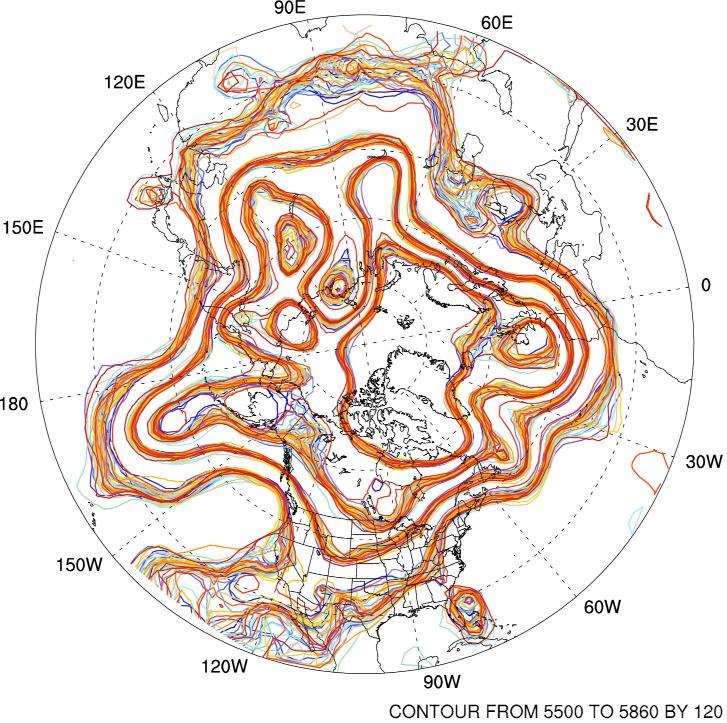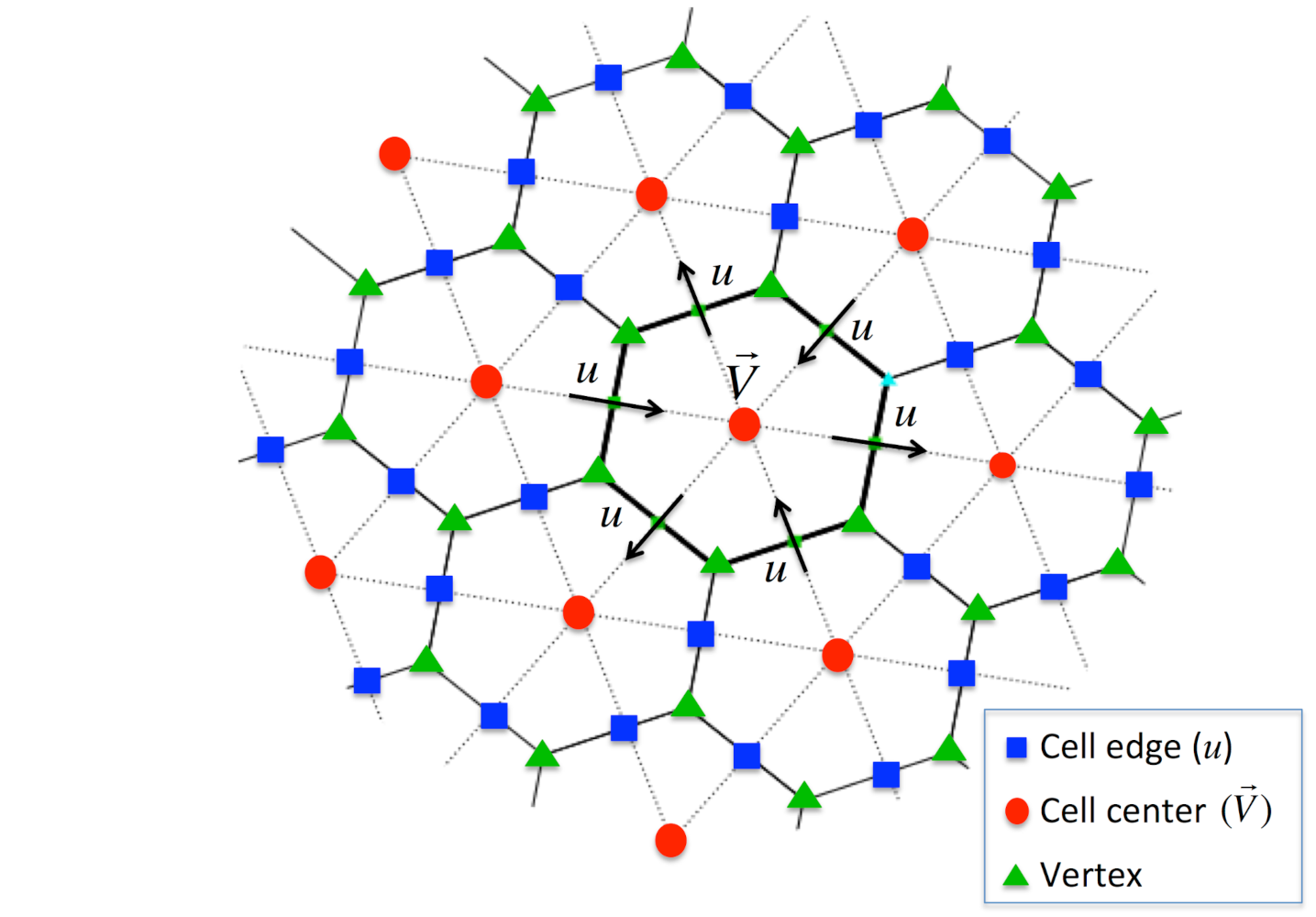Model for Prediction across Scales
Data assimilation for MPAS is available as an ensemble Kalman filter (EnKF) implemented through Data Assimilation Research Testbed
This work is done in a collaborative effort between the Mesoscale and Microscale Meteorology (MMM) Division and the DART development team. DART support for both MPAS-Atmosphere and MPAS-Ocean are available as part of the standard DART package.
In collaboration with NOAA’s Earth System Research Laboratory related efforts are also underway to explore ensemble data assimilation for MPAS-Atmosphere with the Gridpoint Statistical Interpolation (GSI) scheme that is operational at the National Centers for Environmental Prediction.

Grid structure used in the MPAS/DART interface The MPAS/DART interface is built on MPAS’s unstructured centroidal Voronoi mesh, and does not regrid to latitude-longitude grids. In MPAS, the finite-volume approach based on a C-grid staggering retains prognostic equations for mass at the center of finite-volume cells and for the normal component of velocity (u) at the faces (or edges in 2D) of the cells. The normal component of velocity (u) at cell edges is then used to reconstruct zonal and meridional winds at cell centers (V) using radial basis functions (RBFs). To avoid the singularity issue on the poles, the cartesian coordinate is employed.

The forward operators on the unstructured grid mesh are constructed as follows. The dual of the Voronoi mesh, or the triangular mesh (shown as dashed lines in the figure), is used to search the closest cell center to an arbitrary (or observation) point, then find three cell centers of the triangle enclosing the desired point. Mass fields are then horizontally interpolated from the cell centers to the observation location using a barycentric (e.g., area-weighted) interpolation.
While the observed wind quantities are zonal and meridional winds, the normal component of velocity (u) is the only prognostic wind variable in MPAS, we thus implement a couple of different ways of assimilating wind observations. The options determine which wind variables are used in the forward operator to compute expected observation values; how the horizontal interpolation is computed in that forward operator; and how the assimilation increments are applied to update the wind quantities in the state vector of the analysis.
Preliminary results based on real data assimilation experiments indicate that performance is better when the zonal and meridional winds are used as input to the forward operator that uses Barycentric interpolation and the prognostic (u) wind is incrementally updated. However, there remain scientific questions about how best to handle the wind fields under different situations.
For any questions or future collaboration, please contact either Soyoung Ha (syha@ucar.edu) or the DART team (dart@ucar.edu)
- Ha, S., C. Snyder, W. C. Skamarock, J. Anderson and N. Collins, 2017 Ensemble Kalman filter data assimilation for the Model for Prediction Across Scales (MPAS). Monthly Weather Review, 145, 4673-4692, doi:10.1175/MWR-D-17-0145.1